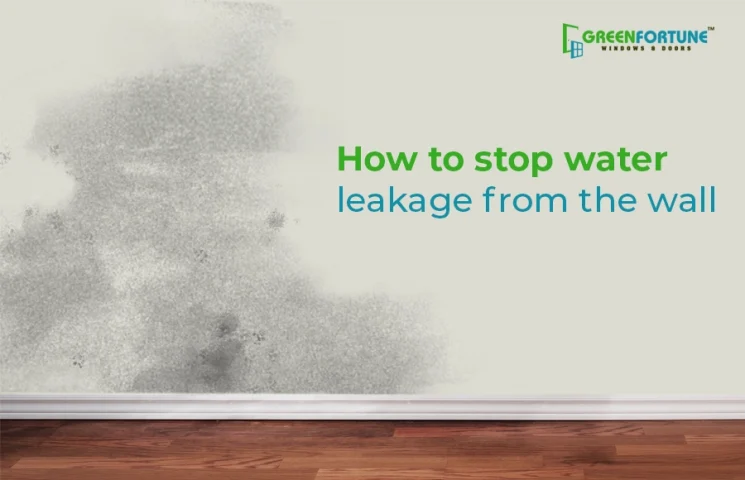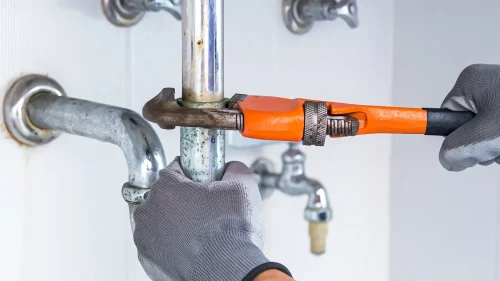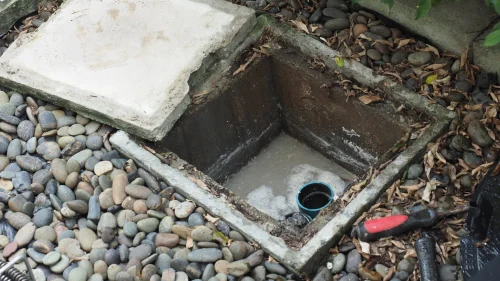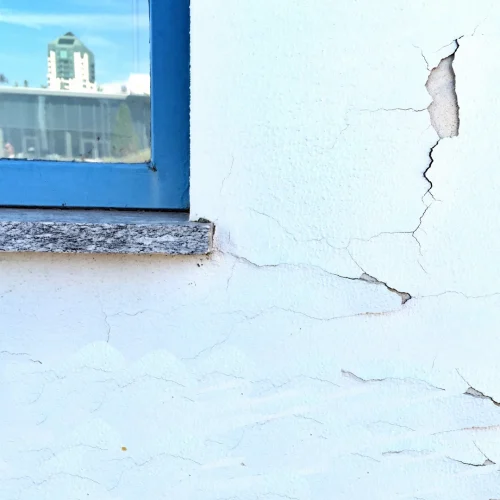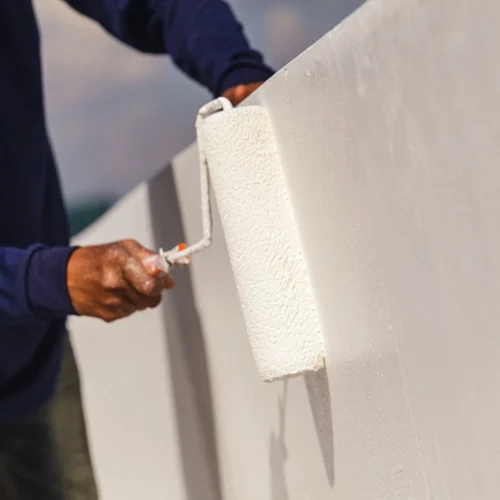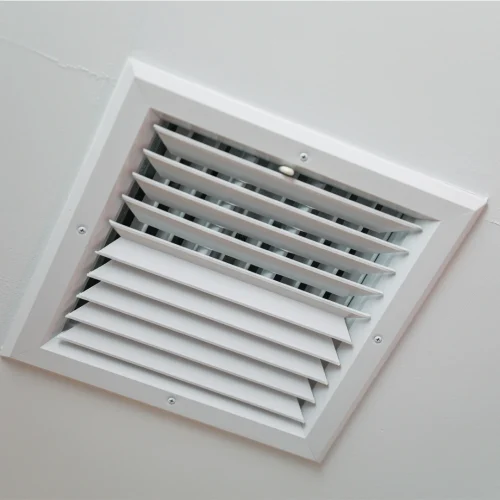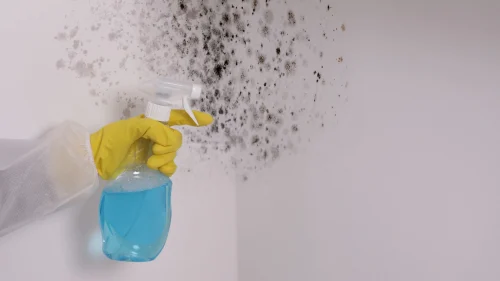
How to Choose Between uPVC Sliding Windows vs. Casement Windows for Your Home
September 23, 2024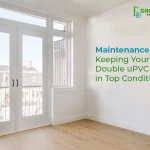
Maintenance Advice for Continuous Good Performance of Your Double uPVC Doors
September 25, 2024Water leakage through walls may appear critical and lead to huge damage if not addressed on time. This guide explains the causes of wall water leakage and then describes how to fix leaking wall effectively step-by-step.
Table of contents
- 1. Understand the Causes of water leaks in wall
- 2. Steps to Stop Water Leakage from the Wall
- 3. Fix Plumbing Issues
- 4. Increase the drainage
- 5. Seal Cracks and Gaps
- 6. Add a Waterproof Coating
- 7. Improve Ventilation
- 8. Treating Mold and Mildew
- 9. When to Call for Professional Help
- Conclusion
- Discover GreenFortune, Your Partner in Quality uPVC Windows and Doors
1. Understand the Causes of water leaks in wall
You really have to figure out what is causing the leak in wall, before you can effectively find the solution.
The usual cause of water leaks in walls is a leaky roof. If your roof happens to have taken damage or has developed cracks, rainwater can easily seep through the walls causing leaks.
Other typical causes are plumbing-related. Water can leak through from pipes laid within your walls or ceiling water leakage, thus causing dampness. This could be due to ageing pipes, rusting, or even weak joints between pipes. Leaking pipes will often require immediate attention.
Another potential factor for water intrusion is poor drainage around the house. It collects right next to your foundation and comes through the walls if it is not working right. This usually occurs where grading has been poor or gutters are plugged. A common sign of such leaks is when the dampness generally appears close to the bottom of the wall.
Structural cracks or gaps in your walls are other common issues. These can occur with time as your very house slowly settles or for other reasons. This is another reason why water may infiltrate your basement over a period of time.
Very high humidity finally causes condensation on walls, especially during cold weather. When this condensation happens, it can create a wet atmosphere which may cause problems that are moisture-related or even go to the extent of facilitating the rise of molds.
2. Steps to Stop Water Leakage from the Wall
First and foremost, you have to identify the source of the water leak in the wall. You should start by checking your roof for any obvious damage. Look for torn or ruined shingles, shattered flashings, and clogged gutters.
If you can see those obvious damages, maybe a leak in the pipe or faucet, search the area on the surrounding ones for a sign or actual water moisture.
If it is related to your foundation, then check the pooling water or the poor grading from your house's outside. Did that make sense? Don't worry, the source may need to be more intently felt when a source isn't immediately revealed upon first exposure.
For fixing water leakage from the roof sheet, if you find out it is a roof leak, do not let the matter linger without correcting it. Start by fixing torn shingles or tiles. Fix back the missing or broken shingles with such that they will seal on tightly. Spot any curled, buckled, or missing flashing around chimneys, vents, or skylights and ensure all is repaired.
Also, make sure your gutters and downspouts are cleaned out and working right to displace the water on your roof and away from the walls. Regular maintenance of the roof can prevent leakages and extend the life expectancy of your roofing materials.
3. Fix Plumbing Issues
For ceiling water leakage solution, the repair should be done by repairing or replacing the entire pipe.
If leak sources can be identified, pipe repair clamps or sealants may be used, but this would be a temporary solution. In the event of the pipe being found corroded or broken or if the leakage is very severe, piping replacement is more likely to be necessary.
Any repairs are best undertaken with a licensed plumber to get the repairs done accurately and without any future deterioration of the situation. Regular inspections within plumbing operations can also indicate where future problems may be in the prevention stage.
4. Increase the drainage
For starters, good drainage is what protects the walls from the water. Have the grading around your home's foundation inspected—you will need to ensure that the ground slopes away, so there is a runoff away from your walls.
Keep your gutters and downspouts free so they don't accumulate and cause overflowing or backups.
Also, installing a French drain or sump pump around the perimeter of your home can go a long way toward keeping water away from your house and thus, reduce the risk of it getting inside through the foundation.
5. Seal Cracks and Gaps
And it is just as easy for water to find its way upright through these gaps in your walls. Check the visible cracks or openings in your walls. Use some waterproof sealant or caulk of high quality and fill up such gaps.
Some larger cracks or bigger damages may require the use of a concrete patching compound or intervention by a professional
Sealing your walls properly is essential in keeping water from infiltrating and can also help improve the insulation of the entire house.
6. Add a Waterproof Coating
Some form of waterproof coating should be added to the exterior wall for added protection from water intrusion.
This coating forms a barrier against moisture, thereby preventing the same from penetrating the walls.
The waterproof coating used should be of a kind recommended by the wall manufacturer.
Use roof water leakage paint specifically for your kind of wall, and carefully follow the instructions included with it.
This additional step is very useful, especially if you live in an area with heavy rain or high levels of humidity.
7. Improve Ventilation
Very high indoor humidity is probably going to cause condensation and, at some point, moisture problems on the walls.
Place exhaust fans in the kitchen and bathroom to help eliminate extra moisture.
Spread ventilation Control the indoor humidity level, which reduces the likelihood of wall leaks stemming from condensation.
8. Treating Mold and Mildew
If mold or mildew begins to form on your walls, take care of it as soon as possible.
Clean the affected areas with a mold solution made with water and detergent.
For heavier infections, use screened-in remedies or call for professional mold remover services.
This will be useful not only in the aesthetics of the walls but also in promoting good health indoors. Regular Maintenance Most leakages are prevented this way
Inspect the whole roof, the plumbing in your house, and all outside walls regularly for any signs that there may be a small problem.
Getting it first will render it little more than a nuisance instead of growing into a much larger problem.
Keep your gutters and downspouts clean; examine them for soundness or deterioration, making minor repairs as needed to prevent bigger water-damage type problems and to protect your house from the elements.
9. When to Call for Professional Help
Though most of the water leakage issues can be easily resolved through DIY approaches, it is under some conditions that one would seek professional help. In case of massive damage in leaking, thus calling for an involving or complicated plumbing issue, then it's safe to consult professionals.
First, they undertake a tasking assessment of the problem and later make expert approaches to the client on how the problem will be fixed properly and safely. Conclusion In fact, that translates to identifying the source, making necessary repairs, and taking preventive measures to cease the drips and spurts.
Conclusion
By addressing the problem quickly and keeping your home maintained, you'll protect your property from further destruction and preserve a dry, safe place to live. Regular inspections and timely repairs will help prevent future problems and maintain the long-term health of your home.
Discover GreenFortune, Your Partner in Quality uPVC Windows and Doors
At GreenFortune, we are proud to offer high-quality uPVC windows and doors at affordable prices. We offer and install a variety of window types for all homes with both durability and aesthetics in mind.
Contact us to find out more about the uPVC window design that we offer. Whether you are renovating your existing home or building a new one, partner with us to elevate the comfort levels and energy efficiency in addition to the style quotient of your space provided by our superior-quality uPVC windows.







